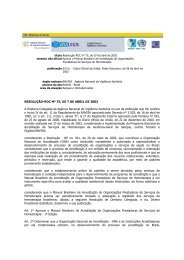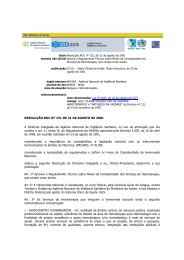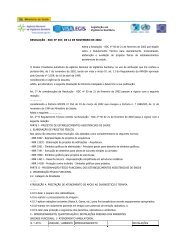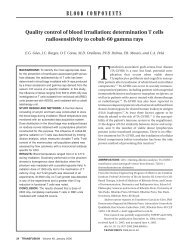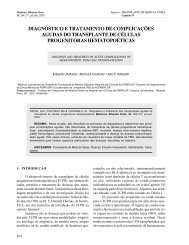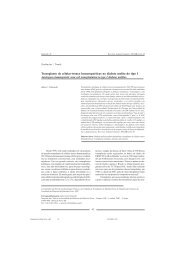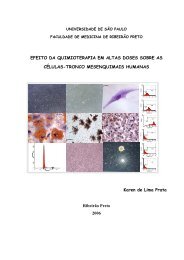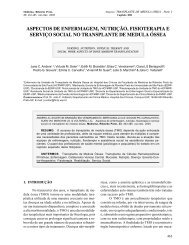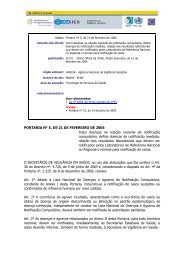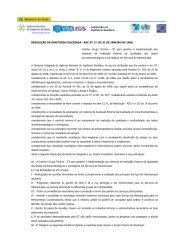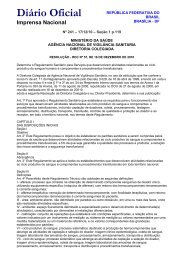Estudo do polimorfismo do sistema sangüíneo Diego em
Estudo do polimorfismo do sistema sangüíneo Diego em
Estudo do polimorfismo do sistema sangüíneo Diego em
Create successful ePaper yourself
Turn your PDF publications into a flip-book with our unique Google optimized e-Paper software.
Summary<br />
studied. The DI A allele has had a 3,1% frequency in <strong>do</strong>nors, 1% in the asiatics, 3,6% in<br />
the caucasians and 29,8% in the indians. In the afro-americans group this allele didn’t<br />
occur. Band 3 M<strong>em</strong>phis was associated with DI A allele in all cases.<br />
The phenotyping and genotyping techniques were in agre<strong>em</strong>ent in 100% of<br />
blood <strong>do</strong>nors, the only samples that both of th<strong>em</strong> were used.<br />
Three not described polymorphisms were observed, two of th<strong>em</strong> characterized<br />
by missense mutations. G1314A at exon 12 occurred in asiatics in 5,5% allelic<br />
frequency; at exon 14 a T1770C mutation occurred in the afro-americans and the<br />
caucasians in a 2,7% and 2% allelic frequencies, respectively; at intron 15 a t>c -535<br />
mutation was observed in a caucasian person. Two silent mutations, already described,<br />
were found: G1323A, exon 12 and C1953T, exon 16. It was also observed, among afro-<br />
americans, a missense mutation G2587A codified by exon 19 that causes the change<br />
val862ile at the protein m<strong>em</strong>brane portion.<br />
Based on our results it is possible to conclude that DI A allele occurs in a higher<br />
frequency than was expected in blood <strong>do</strong>nors and caucasians. Due to the<br />
polymorphisms observed the SLC4A1 gene can be considered high polymorphic.<br />
6



